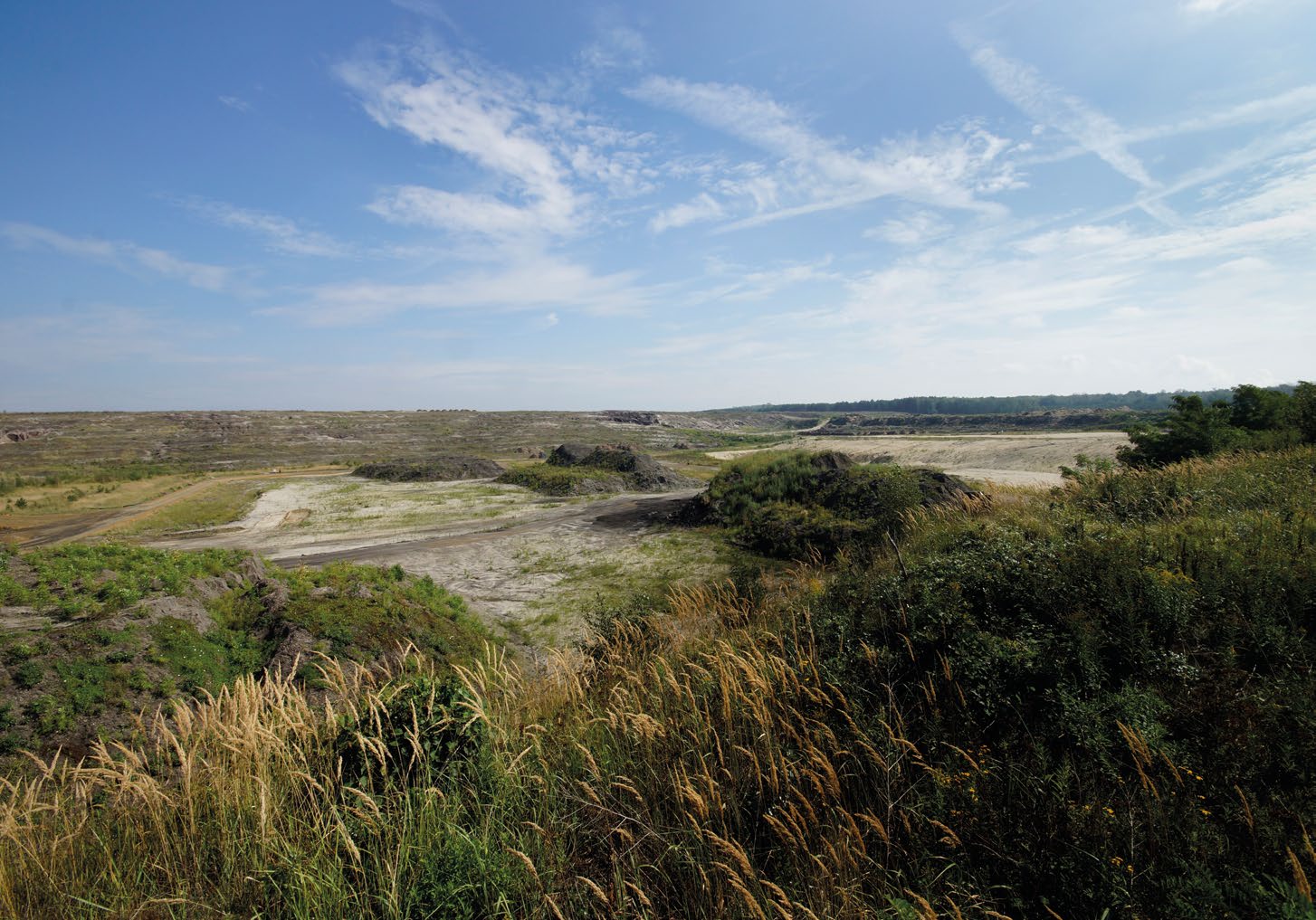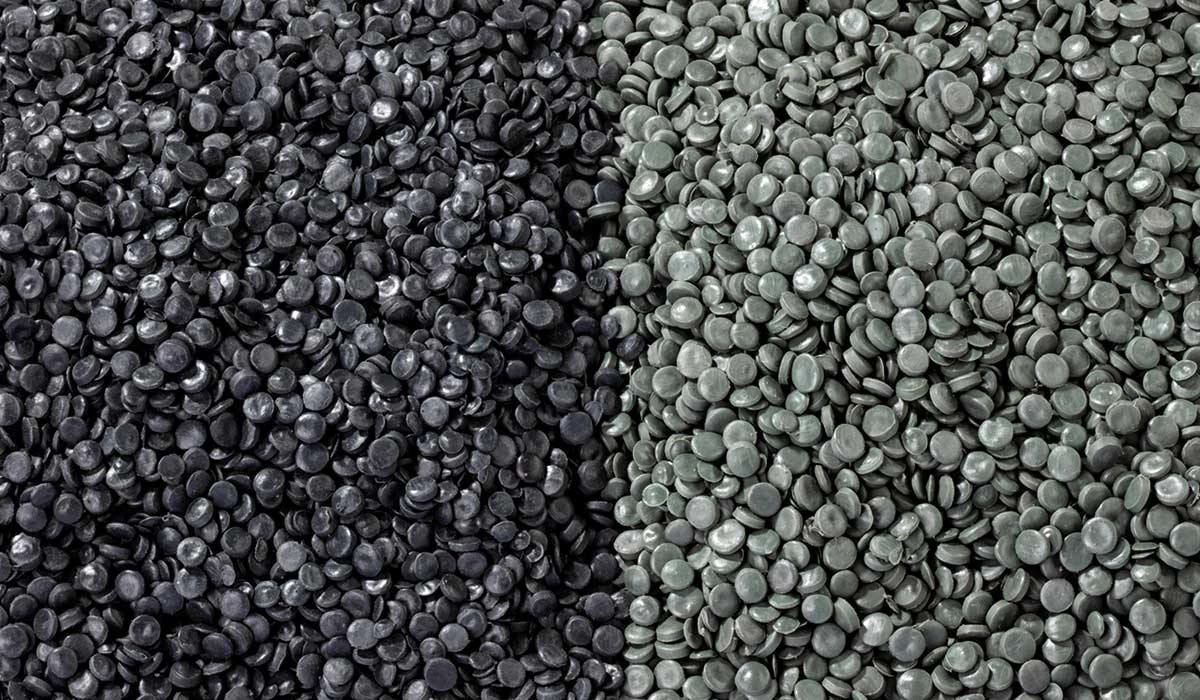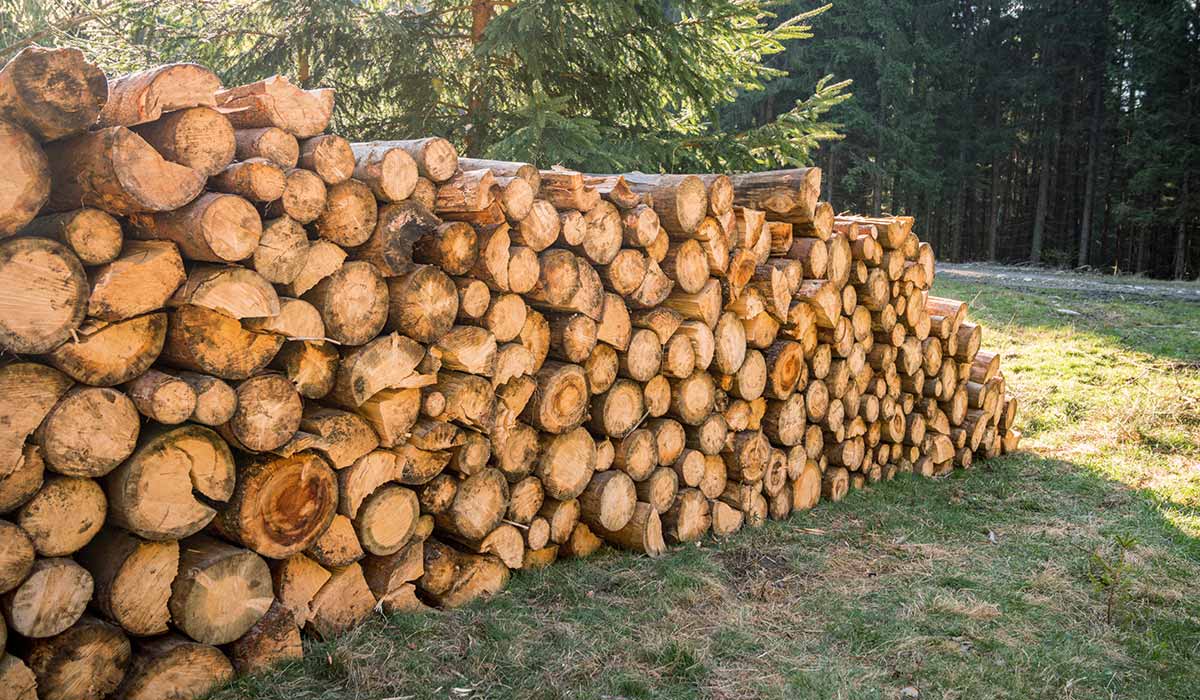
Plastics recycling
Miracle cure and indispensable
The mattress, the smartphone or the light switch - nothing would work without plastic. Plastic is often hidden in areas of life that no one thinks about for long, that are taken for granted in civilisation. A visible sign
of our consumer society are the dark sides: Threatening rubbish carpets in the oceans, microplastics in the soil, littered landscapes... Germany is taking a stand against the careless treatment of nature: through the orderly disposal of light packaging.
light packaging, in that plastic bags have no longer been a free addition to retail purchases since July 2016, and with the creation of a Packaging Act since 2019, which also places greater responsibility on the manufacturers and retailers of plastic packaging.
obligation.
Plastics cannot - at least not yet - simply be replaced. But what kind of substance is hidden behind this term? Who invented plastic (see info box), do people in the developed world really need plastics and what does a responsible, resource-conserving approach to plastic look like?
Plastics are indispensable in everyday life
Included almost everywhere
Our current standard of living would be unimaginable without plastics. Every electrical device - from lawnmowers to smartphones - is insulated with materials made of plastic, because unlike metal, plastics do not conduct electricity. Cars are made of very different plastics - from the dashboard to the bumper to the seat upholstery. Floor coverings, window frames, telephones, furniture, clothing, spectacle frames, aircraft and train interiors, food packaging and dishwashing sponges would all be inconceivable without plastics. vital in the field of medical technology. The power stations that supply our electricity, sewage treatment plants and drinking water production, farms and food producers would not exist without plastics. and food producers would not exist without plastics. In production, plastics have the advantage that - in contrast to metals, for example - they can be processed at quite low temperatures of around 250 to 300 degrees Celsius and are therefore more energy-efficient. and are therefore more energy-efficient to process. Even complicated shapes or colours and fibres can be produced comparatively easily in plastics manufacturing.Wonder material
Plastic is the generic term for a variety of substances, some extremely hard, others heat-resistant, others stretchable and flexible. The inventor is considered to be the Belgian Leo Hendrik Bakeland, who was persistently searching for a miracle substance in 1907. He finally put a piece of phenol into a formaldehyde solution, heated it in a pressure vessel to almost 200 degrees Celsius and formed the first piece of plastic, Bakelite, which could be produced industrially in large quantities and was dimensionally stable. But about 70 years earlier, Charles Goodyear invented rubber, which is made from rubber and sulphur by vulcanisation. Almost at the same time, Victor Regnault discovered PVC. Celluloid was synthetically produced 20 years later by Christian Friedrich Schönbein from cotton and nitric acid, and at almost the same time Frederic Walton invented linoleum from linseed oil, siccatives and resins.
Natural base from plankton
Plastic consists of a raw material that is finite and limited, crude oil. And crude oil itself has nothing to do with plastic. The earth's oil deposits were created at a time when dinosaurs still roamed the forests. The raw material for crude oil is plankton, the smallest organisms in the sea. Dead plankton sank to the bottom and was buried airtight under other layers such as sand and clay. This pressure created a mixture of gaseous and liquid hydrocarbons: Crude oil. In the 19th century, when artificial lighting became widespread in the industrialised world, an inexpensive fuel was sought for the lamps of the time. Edwin Drake was commissioned by the Pennsylvania Rock Oil Company to search for petroleum underground - he found it and the first petroleum boom began. But petroleum was
not only used to generate energy and as fuel. For the first time, sufficient raw material was also available to produce plastics in large quantities.
From hard to flexible
All plastics consist of long-chain molecules, the polymers. Starting with one molecule, the initiator, further molecules are added. This process is called polymerisation. Depending on the treatment method, additive or process steps, plastics are divided into three groups according to their properties. Thermosets are hard and rigid, they
should last as long as possible and are not recyclable. They neither melt nor can they be burnt. Pedal boats, for example, are made of thermosets. They pose a major challenge when they later have to be disposed of as waste
. Thermoplastics are heat-resistant and, like PET bottles, can be melted down and reused many times. Window frames, yoghurt pots or pipelines are usually made of thermoplastics. Elastomers,
which can be deformed and return to their original shape - rubber bands, for example - cannot be melted down, - they too are one of the challenges once they end up as waste.
Polymers cannot be degraded by microorganisms. Plastic that is disposed of in the wild can last for decades almost unchanged and accumulates more and more. Even the types of plastic labelled as biodegradable still lack proof that they break down into their smallest, i.e. atomic, components. Currently, of the over 200 million tonnes of plastics produced, around 26 million tonnes end up in the oceans.
There are already approaches to convert plastics back into their chemical components or to degrade them. Some studies have demonstrated success with moths, bacteria or flour beetles. However, until these possibilities can be used on a large scale
, the current path remains recycling, the reuse of plastics, for example as fence posts, park benches or packaging materials, as well as energy recovery - whereby plastics have a similarly
high calorific value as hard coal.
From miracle substance to problem case - concepts Concepts against the rubbish carpet in the sea
How big are the effects when the plastic is no longer needed and becomes waste, how dramatic is the situation of floating rubbish carpets in the sea? There is not just one floating rubbish continent. The plastic rubbish in the Pacific Ocean
between Hawaii and California was already discovered in 1997. The Great Pacific Garbage Patch, with an estimated area of 1.6 million square kilometres, is the largest rubbish carpet. Another, equally large rubbish patch is floating on the northern
Atlantic Ocean. "The data on the extent and area of the rubbish carpets in the oceans vary greatly, because the rubbish carpet is not a fixed structure. Wind and wave action can push the plastic waste together or pull it apart," explains Dr Henning Wilts, head of the Wuppertal Institute's Circular Economy Department.
After use, plastics can become a huge problem.
Hard or flexible - all properties can be produced. can be produced.
Today, the Great Pacific Garbage Patch contains 79,000 tonnes of plastic waste, almost half of which consists of fishing nets, the other half also mainly of fishing accessories. Researchers suspect that about one fifth of the rubbish patch comes from the aftermath of the 2011 tsunami in Japan. The other half of the floating plastic comes from Asia, and one third of the floating plastic objects have Japanese or Chinese labels.
Indonesia, Vietnam and the Philippines are considered to be the other main sources of the Pacific rubbish vortex. In the Indian Ocean, a particularly large amount of plastic waste is found at the large river mouths of the Indus and Ganges in India. "In Southeast Asia, for example, there are numerous wild dumpsites, some legal, some illegal. Here, plastic waste is simply collected in a heap. Preferably in valleys and usually a river flows at the bottom of the valley. Wind or floods ensure that considerable parts of the plastic waste first end up in the rivers and later in the sea," reports Henning Wilts.
Some studies conclude that most of the plastic in the ocean comes from land-based sources. Studies predict that litter will triple by 2050. The consequences are already dramatic: around 100,000 marine creatures die every year. But the consequences of floating rubbish are more far-reaching: coral reefs, which play a crucial role in maintaining the Earth's climate, are dying.
Plastic, once exposed to the elements, decomposes slowly. It becomes brittle, breaks down into smaller pieces, and abrasion and weathering pulverise the plastic pieces. Now there is another problem: microplastics (less than five
millimetres in diameter) and nanoplastics. Pieces smaller than a thousandth of a millimetre can be ingested by small marine creatures such as plankton and thus enter the food chain. Plastic fragments can accumulate toxins on their surface. Polycyclic aromatic hydrocarbons and even cancer-causing chemicals such as DDT and polychlorinated biphenyls preferentially accumulate on microparticles of polyethylene, the most commonly used industrial plastic. On beaches, researchers found microplastics from clothing such as fleece. Sooner or
later, tiny plastic particles are found in our food.
There are some promising approaches to fishing litter out of the oceans, for example with an oversized comb. One promising concept by 19-year-old Dutchman Boyan Slat consists of 50-kilometre-long
V-shaped tubes that collect 90 per cent of the floating plastic waste at the ocean surface. "The entire, gigantic problem will probably not be solved by projects of this kind alone. Most of the plastic waste is already
below sea level. This means that the rubbish carpet below sea level can hardly be approached any more. Another problem is the processing of the plastic waste collected from the sea. The plastic is so contaminated and weathered that it can often only be processed with an enormously high expenditure of resources
in order to reintroduce it into the cycle," says Henning Wilts.
Experts assume that two thirds of plastic waste is stored at the bottom of the sea. In the long run, wouldn't these all be good reasons to do without plastics completely in the future? "In general, doing without plastic is not necessarily sensible and in many areas it is not even possible. A hospital without plastic would be unimaginable. Electrical installations in houses would not be feasible, and in the case of furniture, for example, plastic would have to be replaced by wood - a resource that only grows back very slowly.
Designing a car without plastic would mean that this car would be enormously heavy and consume considerably more fuel. When it comes to bioplastics, we also have to consider first what we want to use the globally limited arable land for in the most sensible way possible," says Henning Wilts.
Plastics are indispensable in everyday life
Plastic, once exposed to the elements, decomposes slowly. It becomes brittle, breaks down into smaller pieces, and abrasion and weathering pulverise the plastic pieces. Now there is another problem: microplastics (less than five millimetres in diameter) and nanoplastics. Pieces smaller than one-thousandth of a millimetre can be ingested by small marine creatures such as plankton and thus enter the food chain. Plastic fragments can accumulate toxins on their surface. Polycyclic aromatic hydrocarbons and even cancer-causing chemicals such as DDT and polychlorinated biphenyls preferentially accumulate on microparticles of polyethylene, the most commonly used industrial plastic. On beaches, researchers found microplastics from clothing such as fleece. Sooner or later, tiny plastic particles are found in our food.
There are some promising approaches to fishing litter out of the oceans, for example with an oversized comb. One promising concept by 19-year-old Dutchman Boyan Slat consists of 50-kilometre-long, V-shaped tubes that collect 90 per cent of the floating plastic waste at the sea surface.
Industrial production
The production of plastics is very complex and elaborate. Plastics do not only consist of components of crude oil, they are composed of numerous chemical substances, often contain sulphur or acids. Catalysts that accelerate a chemical reaction, stabilisers, fillers or reinforcing materials have to be added from storage tanks via pipelines. Chemical industrial parks resemble oversized chemical laboratories in which raw materials are first separated, individual substances are mixed back in, heated or cooled, volatile residues evaporated or intermediate products filtered. The processes take place in 40 or 50 metre high columns, cylindrical structures connected by kilometre-long pipelines. The final or intermediate products are heated or cooled with heat exchangers: gigantic tubes containing hundreds or thousands of pipes only a few centimetres thick, in which a product flows while water cools or heats this product in the spaces between. Time and again, product residues gum up the heat exchangers, which then only work effectively to a limited extent. For this reason, production plants are shut down at regular intervals and cleaned using industrial service procedures - usually with maximum water pressure. The more automated this cleaning is, the greater the protection for the people working there. Additional filter systems, extraction systems, valves and storage tanks quickly turn a chemical industry site into an area the size of a small town. In Germany, there are 3,570 companies in the plastics industry with almost 400,000 employees.

